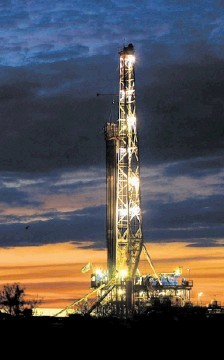
There is huge and growing interest in unconventionals these days, particularly shale gas and oil. Moreover, there’s an unconventional gas conference being staged in Aberdeen late this month.
I was sceptical of its impact until recently but there is plenty of evidence to show that it has had a massive impact in the US especially. Whether it will in the UK and rest of Europe is a different question, however.
The US is the second biggest consumer of oil and gas in the world, having been overtaken by China in 2010. It is also one of the largest energy producers, although the country has been a net importer of both oil and gas for many years.
That is changing, mainly because of shale gas. US gas production declined slowly but steadily until 2005, since when it has risen. There was a massive 7.7% increase in 2011, mainly because of shale gas. One outcome has been a big fall in domestic gas prices and a consequent rise in consumption, notably more gas-fired electricity generation at the expense of coal.
The US has invested heavily in recent years in LNG import terminals but most of those now seem redundant, although there are plans to convert some to LNG export terminals, thanks to the shale revolution.
I would be surprised if the US became a net exporter of gas but there have clearly been knock-on effects on world LNG prices and trade because of the reduced imports.
Will the shale gas revolution be repeated in the UK and elsewhere? Current expert opinion suggests not in the UK at least. And Europe appears to be struggling.
There was the famous example last year of Cuadrilla drilling in the Bowland shale basin which apparently caused two minor earthquakes in Blackpool. The Department of the Environment then suspended drilling, although Cuadrilla has since resumed exploration drilling and is now on its fourth well.
British Geological Survey (BGS) has estimated the UK’s shale gas reserves at about 150billion cu.m or 53trillion cu.ft. I do not know if those estimates are reserves in place or recoverable but if the latter they are equivalent to about two years’ gas consumption. Such a contribution would be very welcome but obviously not on a US scale. BGS is currently carrying out a revision of the UK position.
A BGS map shows most of the shale gas reserves on the east and south coasts of England. The Blackpool/Bowland reserves seem very small in comparison, probably no more than 3TCF.
The estimated shale gas reserves in Scotland are tiny in comparison and concentrated in the Central Belt. That surprises me given the history of the coal industry in Scotland but I am an economist not a geologist. It may be that there is more potential in producing methane gas from the old coal seams.
An interesting report on the UK’s shale gas potential was published a few weeks ago by the Energy Contract Company, a London-based consultancy run by Niall Trimble, an ex-Aberdeen University colleague of mine. It claims that shale gas could account for about a quarter of the UK’s gas consumption in 20 years and attract £95billion investment.
I am sceptical, given the reserves estimates of the British Geological Survey and likely environmental opposition to fracking, the wellbore conditioning technique which has revolutionised the industry in the US.
Environmental regulations are less strict Stateside and the BGS map shows most of the UK shale reserves in what might be described as environmentally sensitive areas. I suspect that many are also constituencies of Conservative MPs. There is particular concern about the possibility of fracking causing water pollution.
It seems unlikely therefore that there will be any large scale shale developments in the UK in the near future and probably not before 2020.
There may be earlier developments elsewhere in Europe such as Poland. However, I do not expect them to have a significant impact on European gas supply and demand. Polish progress is slow.
In the US, the success of shale gas may rebound on itself because of low gas prices. Fracking is relatively expensive and may become more so if the environmental costs have to be internalised, as is almost certain in the UK.
However, technological improvements may offset those higher costs, as has happened with horizontal drilling offshore. The longer term potential in the UK may therefore be significantly greater than it appears at the present time but we shall have to wait and see.
Tony Mackay is the MD of energy economists Mackay Consultants
Recommended for you
